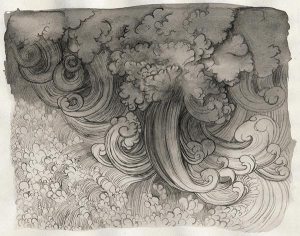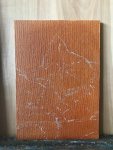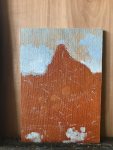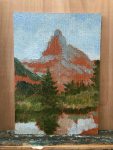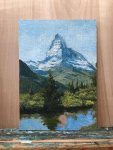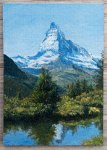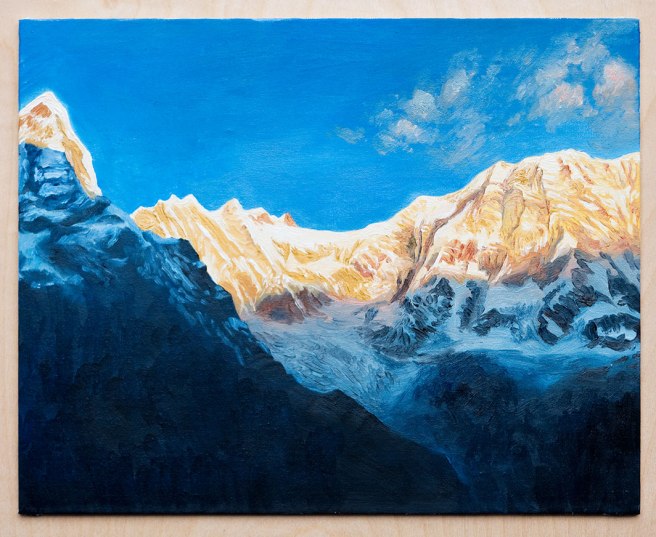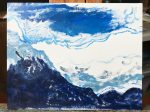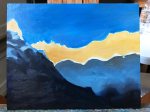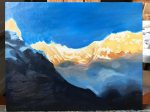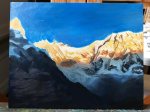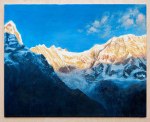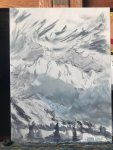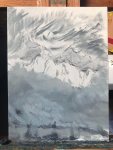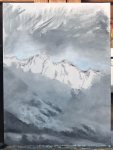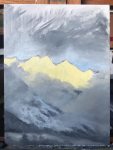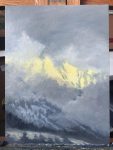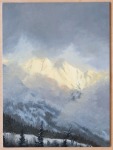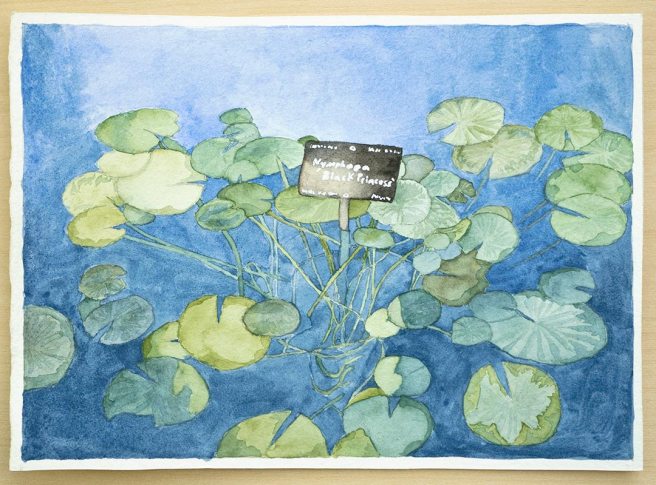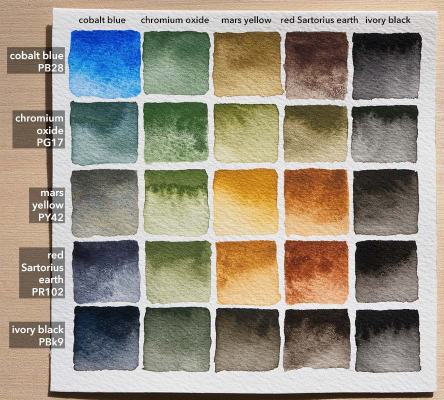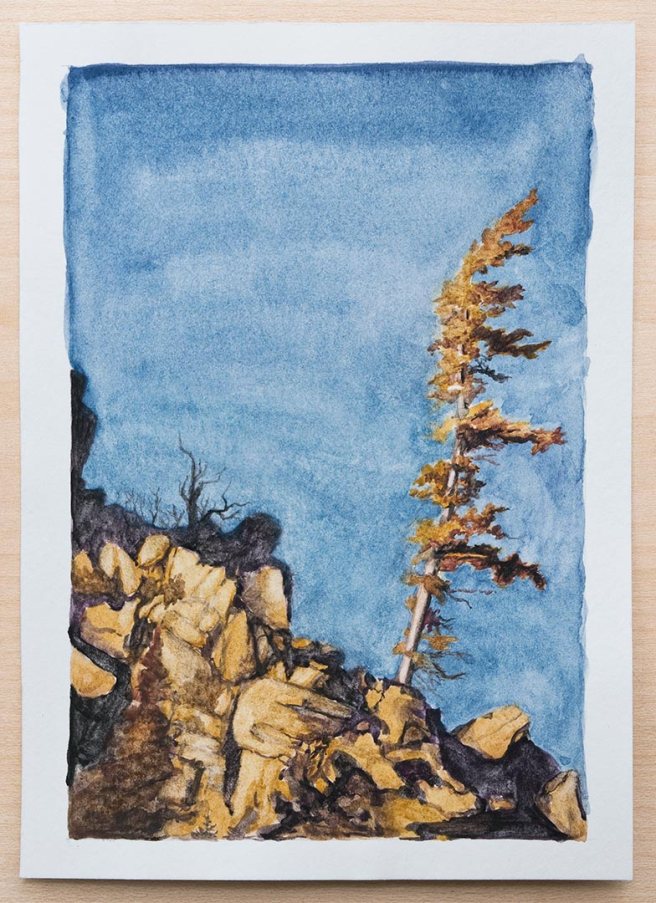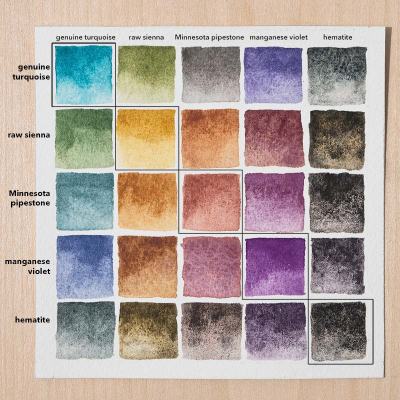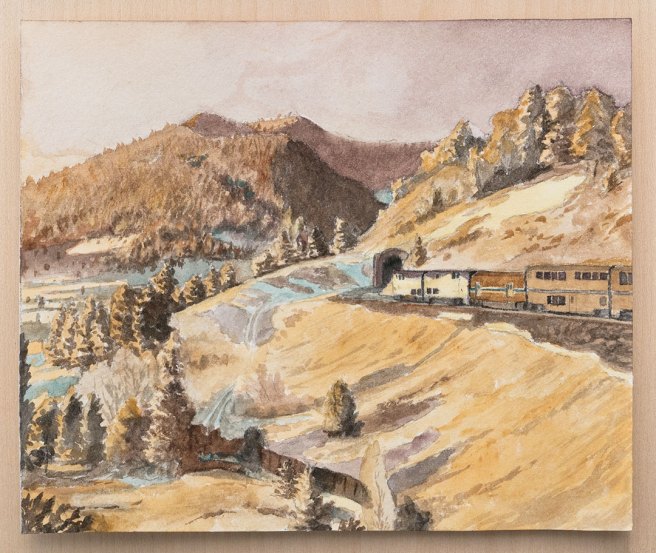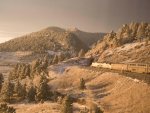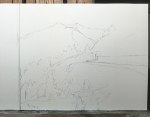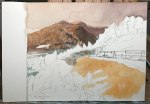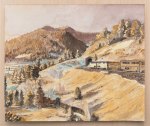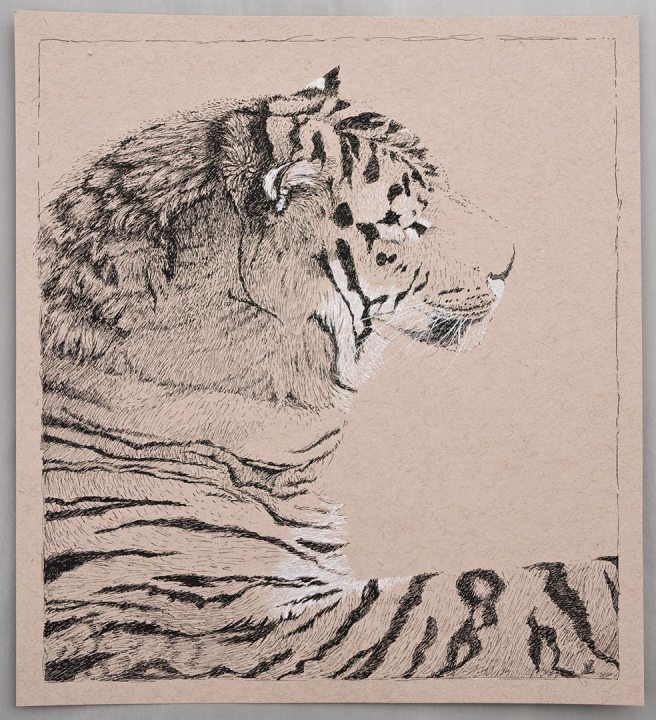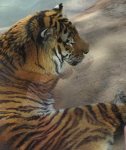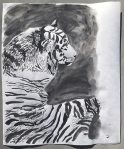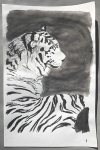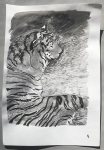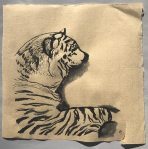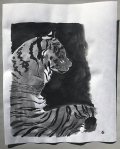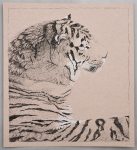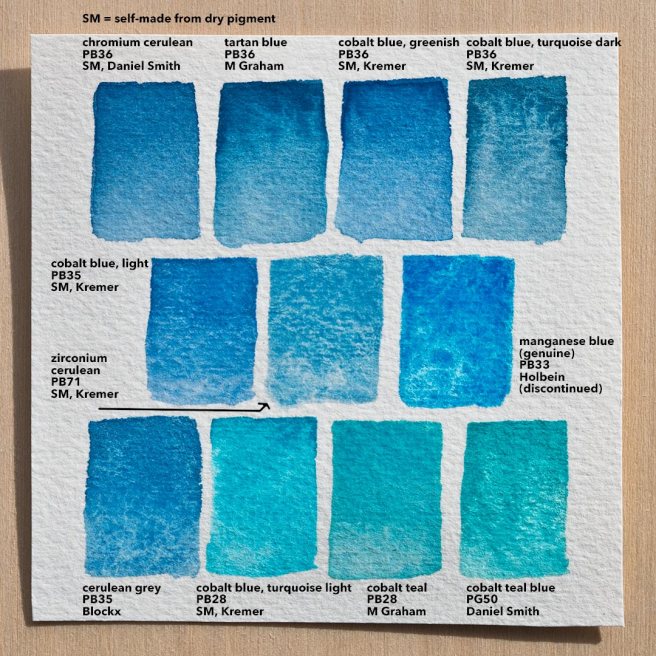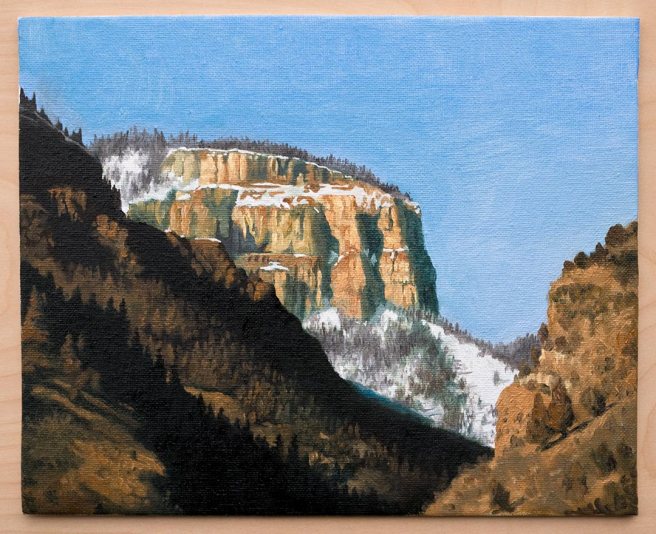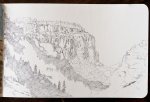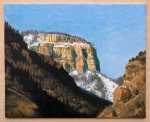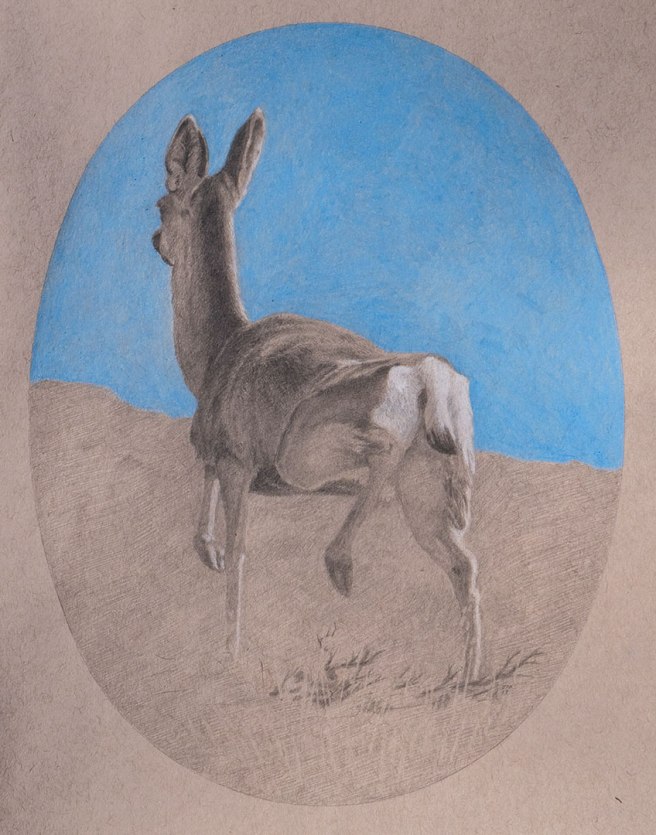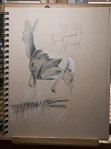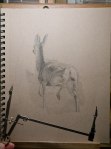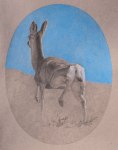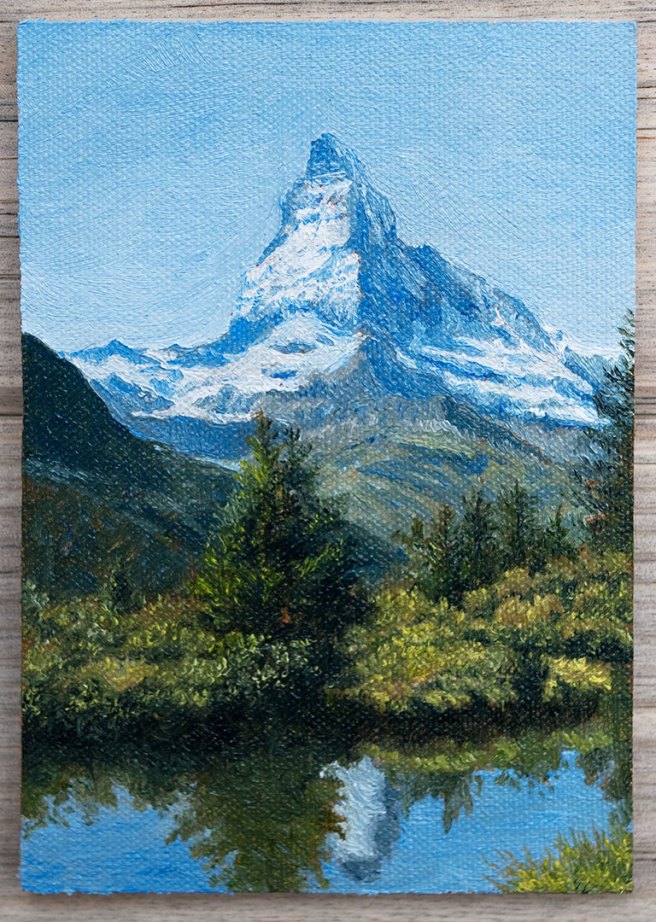
I’ve been reading the book of Psalms in the Bible a lot lately and noticed these verses. “Your love, Lord, reaches to the heavens, your faithfulness to the skies. Your righteousness is like the highest mountains, your justice like the great deep. You, Lord, preserve both people and animals.” (Psalm 36:5-6 NIV)
I’ve also been experimenting with plywood lately. Usually I glue illustration board to a small piece of plywood, draw on it, seal it with acrylic, and then use oil paint over that. The wood gives it a strong back so it won’t bend and crack the paint in the future. This time I wanted to try using the PVA glue to attach a small piece of canvas to the wood. I had already put one coat of gesso on the canvas before attaching it, but next time I’ll probably just attach it raw and then gesso it. In the end there were at least 3 coats of gesso, which also filled in the weave a bit, but the canvas was still rougher than I prefer for small details.
Normally I work on a white surface and lately especially I’ve been drawing extensively before painting, but this time I tried making a simple toned ground from transparent red oxide and a little ultramarine to neutralize it some. The next day it wasn’t fully dry but I decided to start painting anyways. That did cause a little bit of a problem with the reddish paint mixing into the sky color, and you can see in the second step I had wiped away the sky that had been dulled too much by that mixing. In the first step I just used the sky color and some thinned paint on a small brush to sketch the outlines of everything. After that it was mostly a matter of filling in each section with a basic color for that section and then adding details. This was all painted in one day.
The photo reference for this is from Ilja on Paint my Photo.
The toned ground was actually painted with a different brand, but everything after that was just made using the paints from Winsor & Newton above. The sap green probably wasn’t necessary, either.
